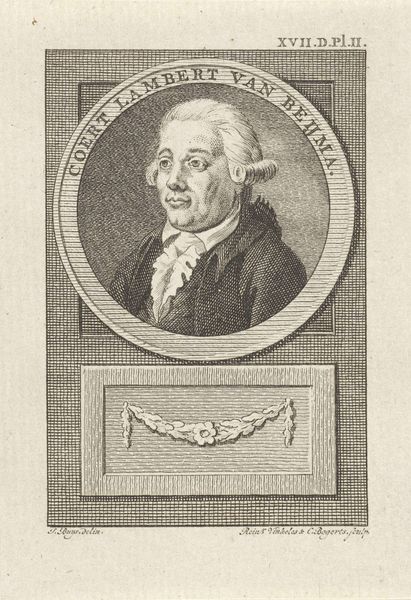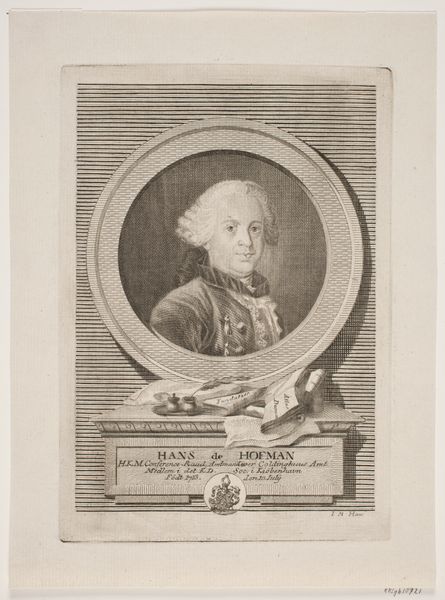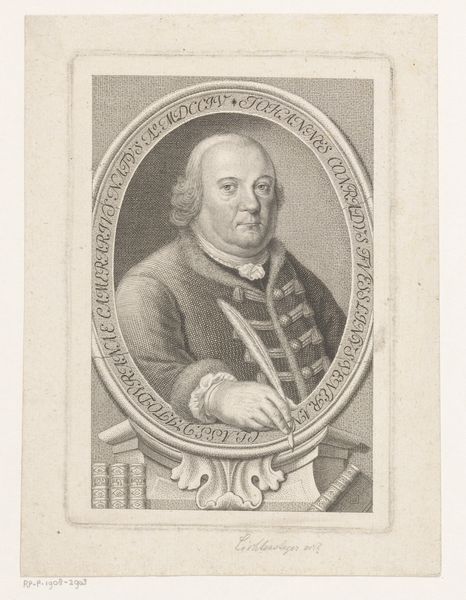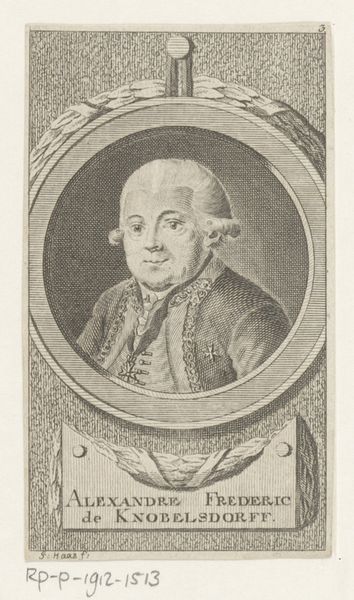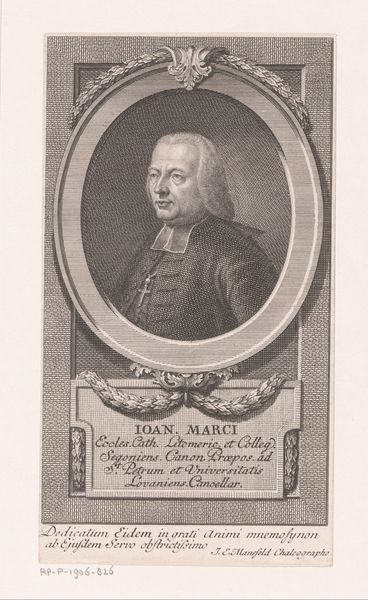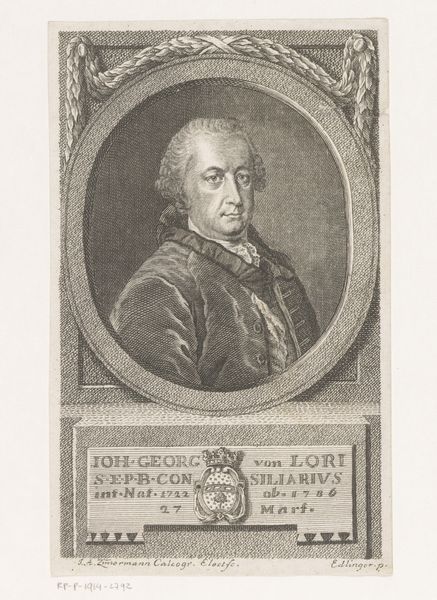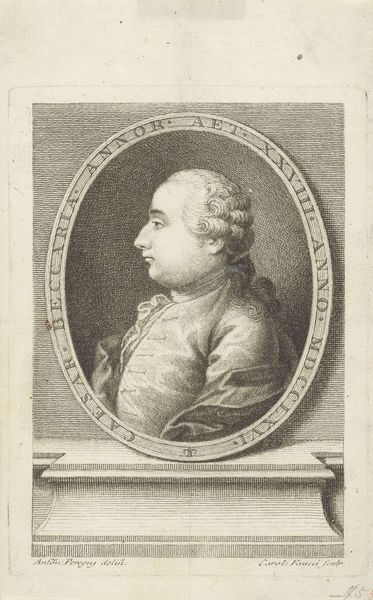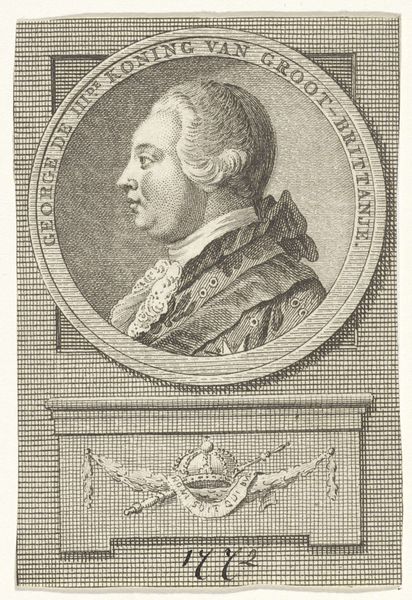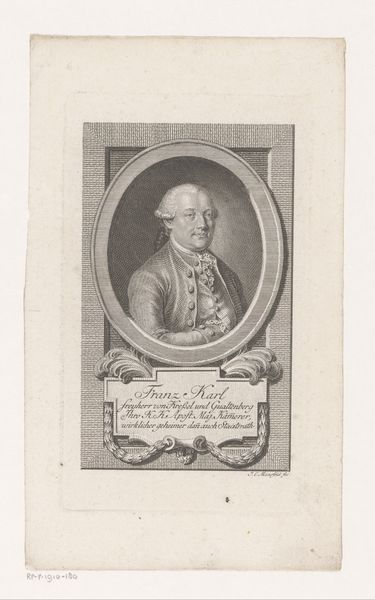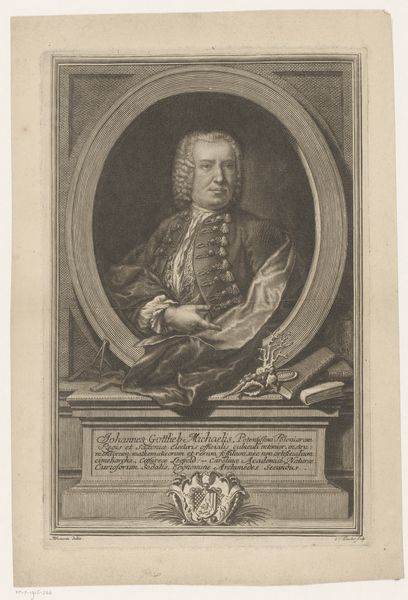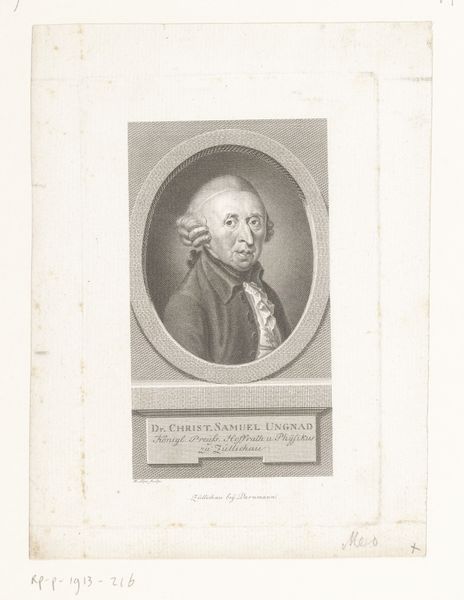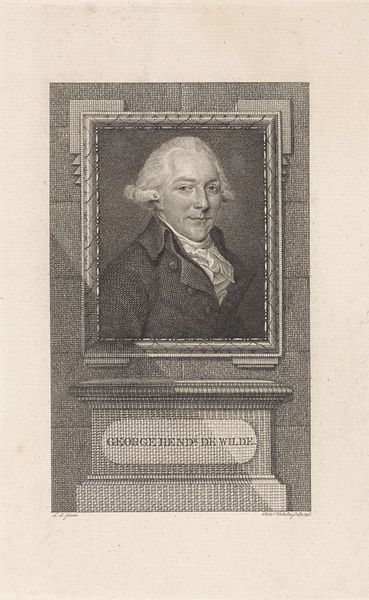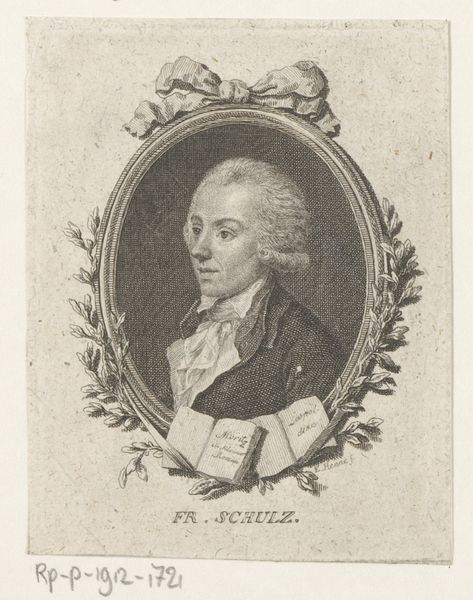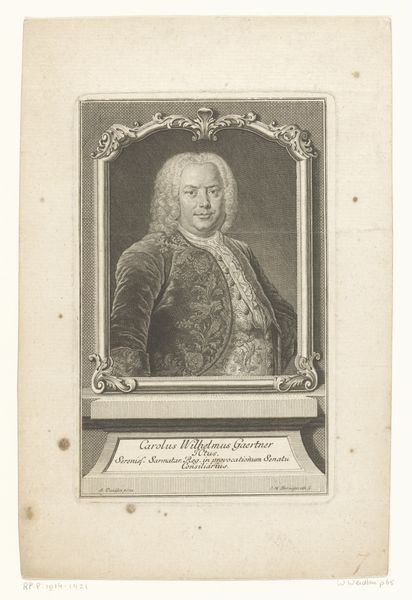
Dimensions: height 89 mm, width 76 mm
Copyright: Rijks Museum: Open Domain
Curator: Allow me to introduce a self-portrait by Hendrik Kuipers, created sometime between 1774 and 1798. It's an engraving, a print. Editor: Intricate. The sitter, framed by what looks like a laurel wreath and bow, is intense and unflinching, though rendered quite small. The engraving technique feels meticulous. Almost rigid. Curator: This stiffness is typical of the era, which was defined by emerging notions of the individual and the roles and power of portraiture in confirming one's identity within social and political networks. Kuipers situates himself both within and above the sphere of labor by displaying the tools of his trade at the portrait’s base. Editor: True. I see the palette and brushes beneath the portrait—a deliberate way of placing his artistry and labor at the forefront of how he wants to be perceived. This was a visual statement, not merely a portrait, wouldn’t you agree? Curator: Exactly. Printmaking was becoming a significant form of disseminating knowledge and social ideas in the late 18th century. Here, Kuipers’s choices reflect Enlightenment values that embraced the individual within new social contexts. He is both the artist and the artwork, reflecting a growing sense of self-awareness and promotion. Editor: So the display isn't only an objective reflection, but also participates in crafting the public image of the artist during a period of significant social transition. How was this imagery interpreted at that time and, more importantly, whom did it aim to reach? It would be good to situate him within those conversations. Curator: We can look at other self-portraits from that era to see the similar visual languages of social aspirations emerging at that time. And by analyzing contemporary literature and critical writings, we can more fully appreciate how those dynamics would shape and reflect larger artistic trends. Editor: Yes, I suppose, by connecting this work to those strands, we can illuminate even more how it participated in wider societal currents. I will keep this in mind as I contemplate the sociopolitical impact of Kuipers' artistic presence.
Comments
No comments
Be the first to comment and join the conversation on the ultimate creative platform.
